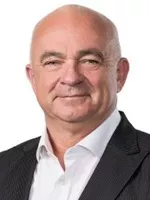Facts
Ms Tinnock initially underwent surgery for repair of an incisional hernia on 7 June 2010, under the care of Dr Justin Gundara, surgical registrar. The surgery was supervised by Dr Michael Payne, specialist general surgeon.
On 15 June 2010, Ms Tinnock underwent a second surgery to drain a seroma which had developed secondary to the first surgery. During the course of that surgery, a mesh dressing was applied.
Dr Payne performed a third procedure on 27 June 2010 to close the abdominal cavity which accommodated the mesh dressing.
Ms Tinnock presented to the Calvary Hospital in Canberra on 16 July 2010 with a severe infection associated with the surgical mesh. On this occasion, she required urgent surgical intervention.
Ms Tinnock subsequently commenced proceedings against the Murrumbidgee Local Health District in the New South Wales Supreme Court alleging battery. In particular, she alleged that she did not consent to Dr Gundara performing the first surgery. In the alternative, if unsuccessful in her claim for battery, Ms Tinnock relied on a claim in negligence alleging that an ordinary specialist general surgeon professing to have the special skill associated with that profession would have inserted a negative pressure surgical drain to reduce the risk of post-surgical infection. Ms Tinnock went on to claim that in relation to the second and third procedures, reasonable care on the part of her surgeons required that they diagnose the presence of infection and either remove the mesh as its probable source or treat her as an inpatient with intravenous antibiotics for a prolonged period.
To establish an action in battery, Ms Tinnock had to establish that she had not consented to the treatment performed, or that the consent she had provided was invalid.
In considering the question of consent, the Court emphasised that Ms Tinnock's case was not that she was mistaken as to the nature or quality of the procedure proposed or its intended therapeutic nature, but rather, she alleged that she was mistaken as to the identity of the person who would perform the surgery.
This gave rise to two questions for the Court to consider, first, whether Ms Tinnock believed the operation would be performed by Dr Payne and no one else, and if so, whether this led to a mistaken belief on her part as to the nature and character of the operation so as to vitiate her consent. Campbell J formed the view that even if she was mistaken as to who would perform her surgery, this would not have led to a vitiation of consent since the nature and character of the operation would remain the same.
Ms Tinnock signed a consent form at her first consultation with Dr Payne on 25 February 2010. The contents of that consent form indicated that Ms Tinnock had consented to an incisional hernia repair (post-caesarian section).
The twelfth line of that consent form contained the acknowledgement, "I have been told that the procedure/treatment may be performed by another doctor".
During the course of cross-examination, Ms Tinnock identified her signature, and gave evidence that whilst she had read the form "fairly closely" before signing it, she was unaware of the content of that acknowledgement.
Whilst he did not recall the details of what he had told Ms Tinnock, Dr Payne gave evidence that it was his standard practice to inform patients that in the public system, consultant surgeons will not always personally perform the procedure, and that the procedure might be performed by one of his registrars.
Ms Tinnock denied receiving this information and stated that she would have requested further details regarding any other doctor who might perform the surgery if she had.
The clinical record nominated Dr Gundara as the surgeon and Dr Payne as the assistant. Dr Gundara was halfway through his surgical training at the time of Ms Tinnocks Surgery, and subsequently became a Fellow of the Royal Australasian College of Surgeons in March 2015. He gave evidence that all relevant decisions regarding the surgery were made by Dr Payne.
Findings
The Court accepted both surgeons' evidence regarding their standard practice and found that this was not an operation performed by Dr Gundara rather than Dr Payne, but that it was performed by both doctors although Dr Gundara was the designated surgeon. Both doctors were present and "scrubbed in". Dr Payne was not merely standing by and watching, but directed Dr Gundara fairly closely and took an active part in the procedure. Moreover, the evidence of the doctors accords with what is generally known about the practice of surgeons, that is to say that they very commonly work in pairs when performing surgery under general anaesthetic.
Ms Tinnock was found to be aware of the contents of the consent form, and she was found to have understood its terms when she signed it.
Accordingly, Ms Tinnock's claim in battery failed.
With respect to Ms Tinnock's claim in negligence, the Court found that Dr Payne's care fell short of the standards of the ordinary surgeon in that he failed to use negative pressure drains in the original repair of the incisional hernia, failed to identify the mesh infection by 3 July 2010, and failed to treat the mesh infection more aggressively by re-operating to remove the mesh for washing with topical antibiotics or removing it altogether.
Ms Tinnock succeeded in her claim in negligence and was awarded $1,005,509 in damages.
The Court's decision in relation to consent indicates that so long as the treatment rendered is consistent with the nature and character of the treatment to which a patient has consented, consent will not be vitiated where a different surgeon performs the procedure. However, that surgeon will need to possess the ordinary level of skill and competence.
The content of this article is intended to provide a general guide to the subject matter. Specialist advice should be sought about your specific circumstances.


